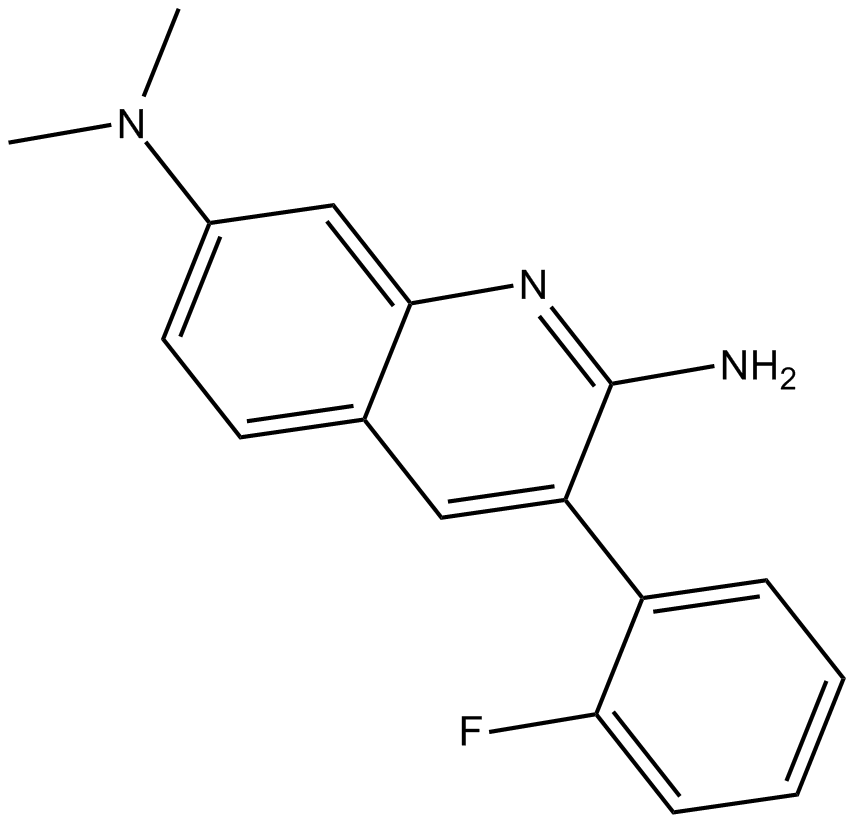Arylquin 1 |
| Catalog No.GC10040 |
potent secretagogue of the tumor suppressor protein prostate apoptosis response-4 (Par-4)
Products are for research use only. Not for human use. We do not sell to patients.

Cas No.: 1630743-73-5
Sample solution is provided at 25 µL, 10mM.
Arylquin 1 is a potent secretagogue of the tumor suppressor protein prostate apoptosis response-4 (Par-4).
Par-4 is ubiquitously expressed in normal cells and tissues, but it is inactivated, downregulated or mutated in several types of cancers. Par-4 can selectively induce cancer cell apoptosis but not normal cells. Both intracellular and secreted Par-4 have a role in apoptosis induction by caspase-dependent mechanisms.
In vitro: Previous study showed that Arylquin 1 produced a dose-dependent secretion in MEF cells and also induced robust secretion of Par-4 in normal or immortalized human cells but failed to induce the secretion of Par-4 in various lung tumor cells. Moreover, it was found that Brefeldin A, which blocked anterograde endoplasmic reticulum–Golgi traffic, could inhibit basal and Arylquin 1–inducible Par-4 secretion, indicating that Arylquin 1 regulated Par-4 secretion through the classical secretory pathway. In addition, cells treated with Arylquin 1 showed neither Par-4 co-immunoprecipitation nor colocalization with vimentin, suggesting that Arylquin 1 could displace Par-4 from vimentin. This action of Arylquin 1 was not associated with inhibition of vimentin expression, demonstrating that Arylquin 1 might cause conformational changes in vimentin to block its ability to bind and sequester Par-4 [1].
In vivo: So far, there is no animal in vivo data reported.
Clinical trial: Up to now, Arylquin 1 is still in the preclinical development stage.
Reference:
[1] Burikhanov R et al. Arylquins target vimentin to trigger Par-4 secretion for tumor cell apoptosis. Nat Chem Biol. 2014 Nov;10(11):924-6.
Average Rating: 5 (Based on Reviews and 3 reference(s) in Google Scholar.)
GLPBIO products are for RESEARCH USE ONLY. Please make sure your review or question is research based.
Required fields are marked with *




















